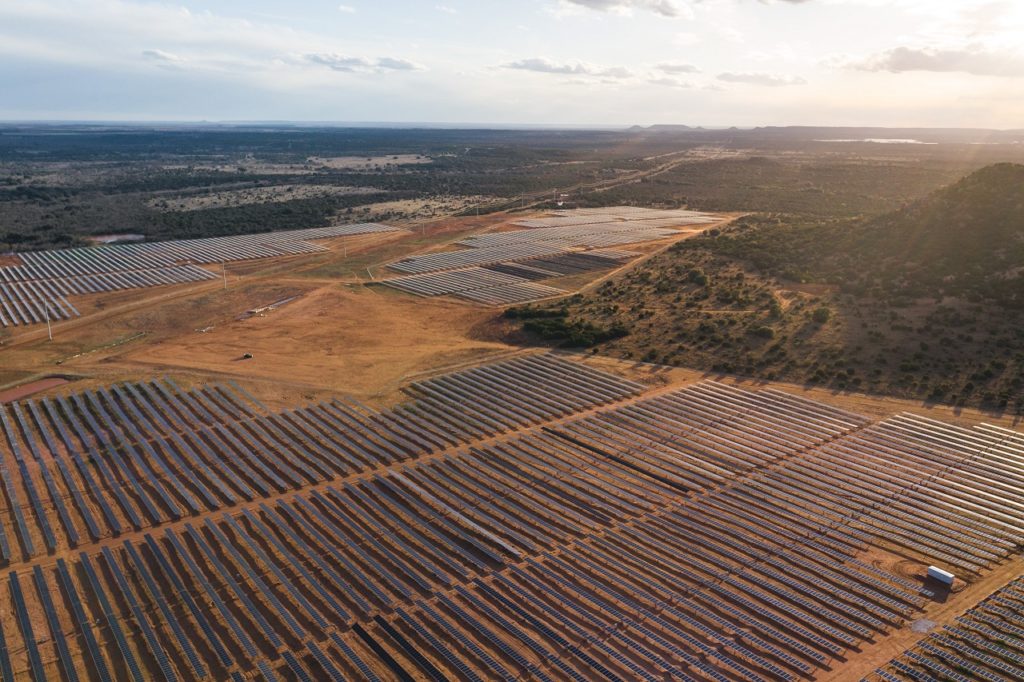
Revealing details of his Build Back Better (BBB) agenda in October, US President Joe Biden described the framework as “the most significant investment to deal with the climate crisis ever”, drawing glowing responses from across the country’s solar sector, which would benefit from large swathes of policy support included in a version of the act that was passed by the House a month later.
With US$555 billion of the US$1.75 trillion bill earmarked for climate and clean energy measures – including expanded investment tax credits (ITCs) for solar projects and support for domestic PV manufacturers – the act is seen as a centrepiece of Biden’s strategy to slash the US’s greenhouse gas emissions 50-52% by 2030 and reach a carbon pollution-free power sector five years later.
Unlock unlimited access for 12 whole months of distinctive global analysis
Photovoltaics International is now included.
- Regular insight and analysis of the industry’s biggest developments
- In-depth interviews with the industry’s leading figures
- Unlimited digital access to the PV Tech Power journal catalogue
- Unlimited digital access to the Photovoltaics International journal catalogue
- Access to more than 1,000 technical papers
- Discounts on Solar Media’s portfolio of events, in-person and virtual
However, last weekend’s bombshell announcement from Senator Joe Manchin of West Virginia that he would not vote for the bill has left the renewable energy industry wondering how much of the legislation will be salvaged and if the Democrats will be able to reach an agreement to get some form of the act passed next year.
The importance of BBB for the PV sector was illustrated on Monday as solar stocks plunged following Manchin’s reveal. Residential installer Sunrun fell more than 10% before recovering some of its losses, while rival installer SunPower and thin film module manufacturer First Solar also saw declines. The impact was also noted overseas, with Chinese module manufacturers JA Solar and Trina Solar both experiencing high single-digit drops.
Manchin, who owns stock in a coal brokerage firm and is the chair of the Senate Committee on Energy and Natural Resources, said in a statement on Sunday that the energy transition that his colleagues seek “is already well underway”. While there is no doubt that the US renewables sector is making enormous strides to accelerate deployment – the country’s total solar capacity passed 100GW in Q1 and additions are set to reach a record high this year – and decarbonise grids, solar currently represents only 3% of the nation’s electricity supply.
Solar has the potential to power 40% of the US’s electricity by as soon as 2035, research published by the Department of Energy (DOE) in September suggested, which would require as much as 1TWac to be deployed. This could be achieved, the DOE said, through aggressive cost reductions, supportive policies and large-scale electrification, while bolstering a domestic solar sector that would expand to employ as many as 1.5 million people.
While Congress last month passed the US$1 trillion bipartisan infrastructure deal, which includes the largest investment in clean energy transmission and the grid in American history, according to the White House, it is BBB that gives the solar sector the green light to ramp up investment. It would allow developers to supercharge installation rates while fostering the growth of domestic PV manufacturers through credits for companies making products such as modules, inverters and trackers.
For new US solar projects, BloombergNEF estimates the levelised cost of electricity for the technology would decline by almost half in the next decade, thanks to generous policy support in BBB, while Wood Mackenzie predicts an extension of the ITC would boost solar installs 31% in the next five years, with the utility-scale segment forecasted to receive the largest uplift. Meanwhile, BBB would also introduce an ITC for standalone energy storage, a policy that would be “transformative”, according to the country’s Energy Storage Association.
Manchin said in his statement that pushing a transition to clean energy “at a rate that is faster than technology or the markets allow will have catastrophic consequences for the American people like we have seen in both Texas and California in the last two years”. California suffered rolling blackouts in August 2020, in part due to resource planning targets not evolving to keep pace with climate change-induced extreme weather events, and Texas was hit by a deadly winter storm earlier this year that caused more than 4.5 million people to lose power, primarily due to natural gas facilities freezing.
Extreme weather events and natural disasters in the US caused US$95 billion in damages last year, nearly double the losses seen in 2019, illustrating the need to accelerate decarbonisation in a country that is the second-largest emitter of greenhouse gases worldwide. Following Texas’s winter storm in February, homeowners in the state have been increasing investments in rooftop solar and energy storage systems to protect against future blackouts, with installers enjoying a boom in business. If the House version of BBB passes, research from Wood Mackenzie suggests Texas will add 7GW of additional solar by 2026.
Democratic leaders are now tasked with coming up with refashioned legislation that can win over Manchin, who previously pushed to remove climate policies from BBB, such as the US$150 billion Clean Electricity Performance Program, which would have rewarded energy producers that switch to renewables. “Failure is not an option here,” said Senator Ron Wyden. “This is our last chance to prevent the most catastrophic effects of the climate crisis.”
Speaking to reporters on Tuesday, Biden said: “I still think there’s a possibility of getting Build Back Better done.” Renewables-supporting policies must remain front and centre if the US is to meet its decarbonisation targets.







